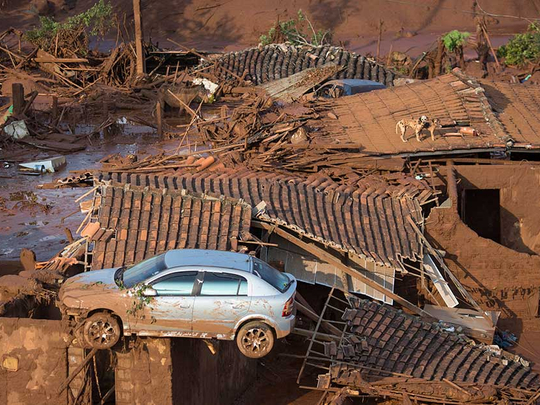
Mariana, Brazil: Firefighters discovered more bodies early Friday after at least 17 people where killed when a dam burst at a mining waste site in Brazil, unleashing a deluge of toxic mud.
Adao Severino Junior, the fire chief in the city of Mariana, told AFP that he would not release a new death toll until relatives of the victims were notified.
Severino Junior said late Thursday that 17 people had been killed and more than 50 injured in the disaster in the village of Bento Rodrigues, in southeastern Minas Gerais state.
The number of missing could surpass 40, he added.
Bento Rodrigues is 80 per cent buried, the fire chief said. The village has a population of about 600, most of whom work for the mining company Samarco, jointly owned by Vale of Brazil and BHP Billiton of Australia.
A torrent of muck several hundred meters long swamped homes and ripped off their roofs when the dam retaining the mineral waste broke.
The mud reached up the intact roofs of some houses. Some people fled to their rooftops and waited to be rescued.
The rushing mud also toppled electrical pylons, cutting off power, so rescuers laboured overnight mostly in the dark.
Bulldozers were busy clearing roads blocked by the muds so that vehicles with rescuers can reach the site, said Sergeant Damaceno, a Civil Defense spokesman.
There were 200 people involved in the overnight rescue operations, a number that will rise on Friday, he said.
According to Damaceno, 122 Bento Rodrigues homes were buried in mud, while 150 area residents spent the night at a shelter in Mariana, the nearest city some 23 kilometres away.
The surface area of mud held back by the dam that gave way is equivalent to 10 football fields. Twenty-five people worked there, local mining union leader Ronaldo Bentro said.
Minas Gerais has been the main mining hub of Brazil since the 16th century.












